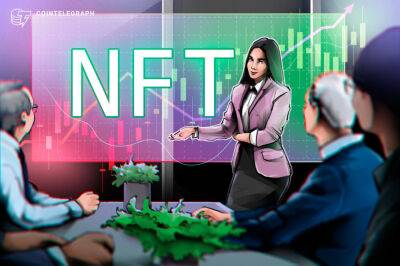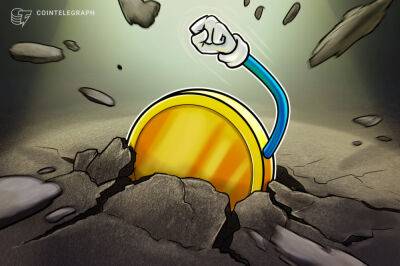Could Terra fall prove to be Lehman Brothers moment for crytocurrencies?
Billions were wiped off the cryptocurrency market this week with the collapse of the Terra “stablecoin”. But is its failure just another example of the here-today-gone-tomorrow nature of the sector, or could it be the beginning of a wider downturn?
Terra is a stablecoin – a cryptocurrency that is intended to have a fixed value, typically $1. Stablecoins function similarly to a bank in the crypto ecosystem, providing a safe place to store money and greasing the wheels of commerce.
Many stablecoins, such as USDC and Tether, get their stability from large reserves, and are supposed to keep enough liquid assets on hand to cover all of the coins in circulation. But Terra is a new breed of “algorithmic stablecoin”, which effectively prints money out of thin air and uses a complex set of “smart contracts” to try to ensure the value hovers as close to $1 as possible. That arrangement worked – until it suddenly didn’t.
Terra “broke its peg”. After hovering about $1 for almost a year, the value of one coin plummeted, first to 70¢, and then further, settling around 35¢ on Wednesday afternoon. The complex algorithmic deal that was supposed to keep the coin trading at a fixed price failed, as investors raced to liquidate their positions faster than the automatic stabilisers could kick in.
The other half of the Terra stablecoin is a floating token called Luna. In theory, when the Terra value drops too low, Luna holders are supposed to automatically trade their coins in, propping the price up. But the value of Luna has also fallen precipitously, from $86 last week to just 86¢ today. The charismatic co-founder of Terraform Labs, which developed the stablecoin, Do Kwon, has promised action, telling investors: “I understand the last 72 hours
Read more on theguardian.com



![Fantom [FTM] trumps TerraUSD [UST] as investors were dumbfounded by… - ambcrypto.com](https://finance-news.co/storage/thumbs_400/img/2022/5/15/25699_ugl.jpg)





![Here’s how Avalanche [AVAX] is responding to a slew of good developmental news - ambcrypto.com](https://finance-news.co/storage/thumbs_400/img/2022/5/14/25646_zxju.jpg)






![Will The Sandbox [SAND] investors mend their ways after this market crash - ambcrypto.com - city Sandbox - city Santimenthowever - city Santimentmeanwhile](https://finance-news.co/storage/thumbs_400/img/2022/5/14/25595_nmfa.jpg)






